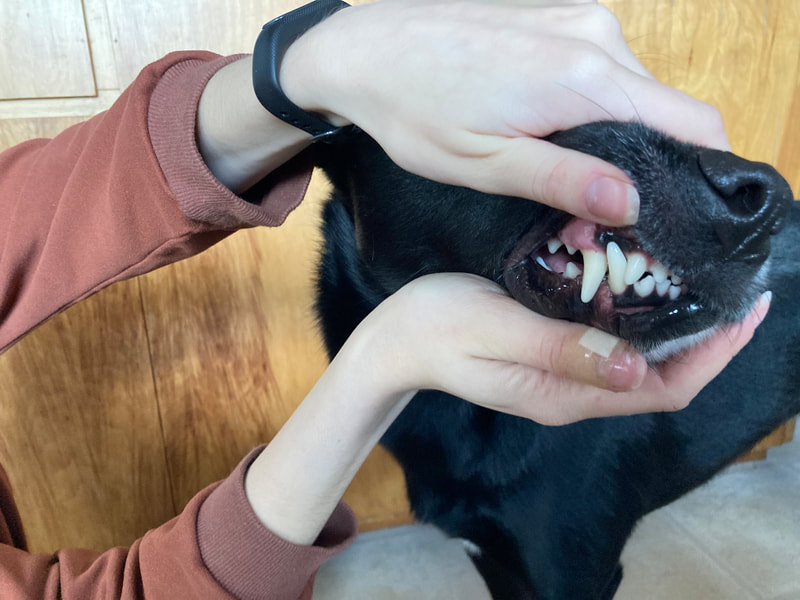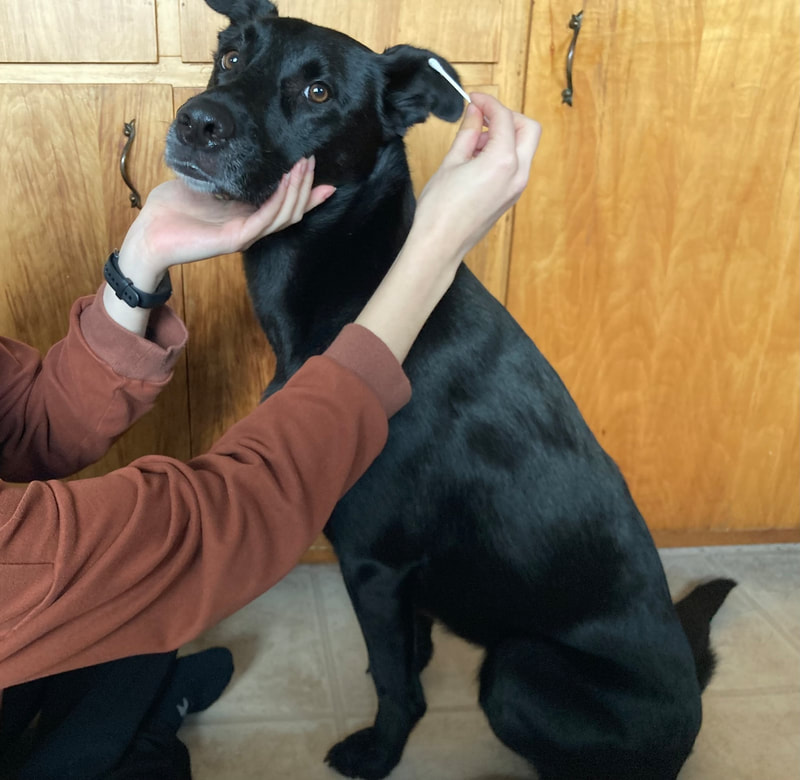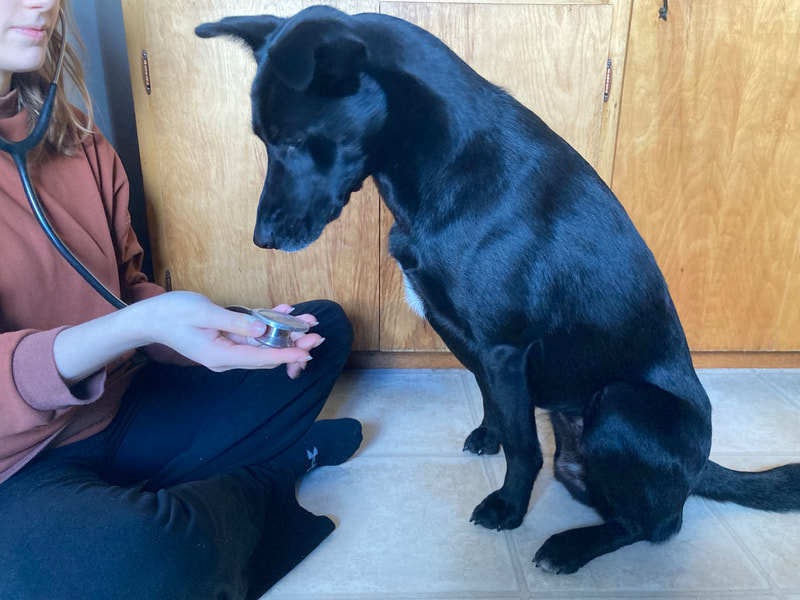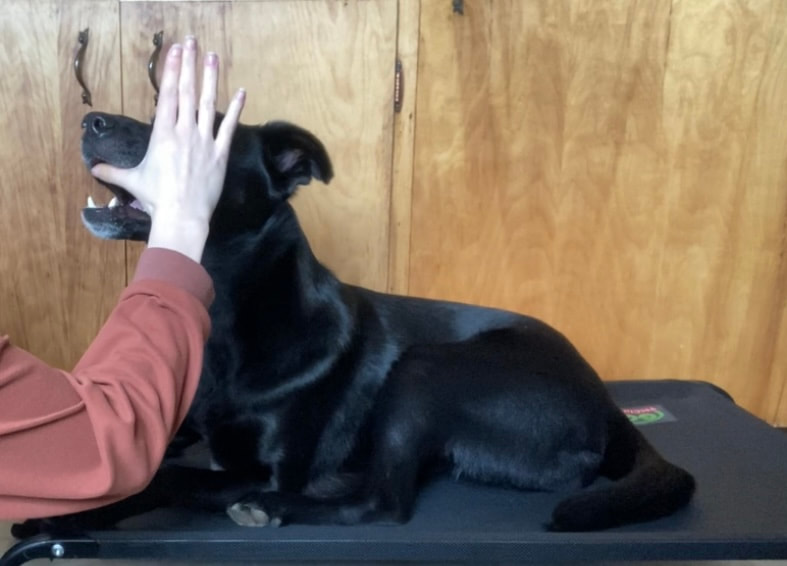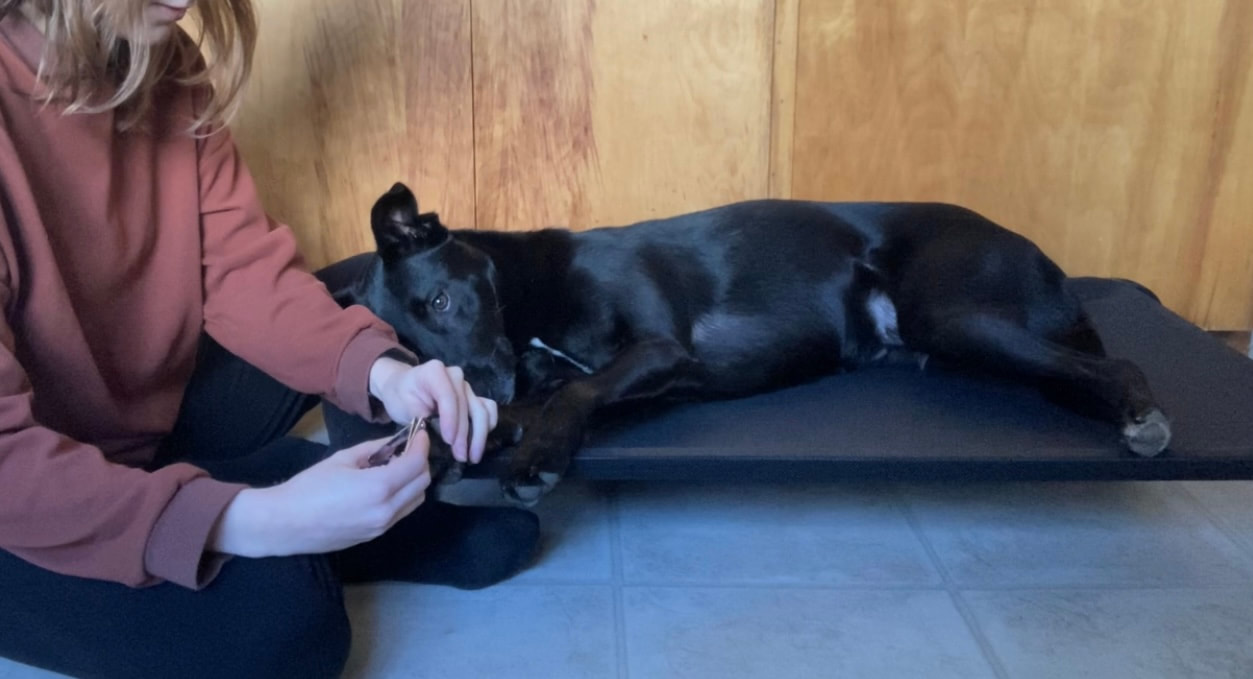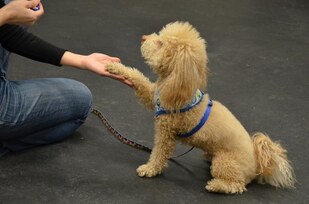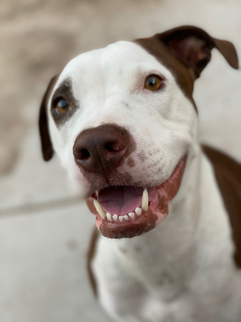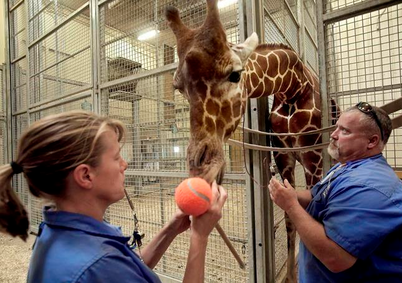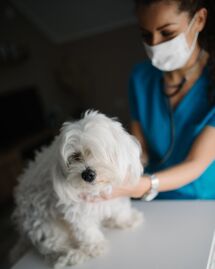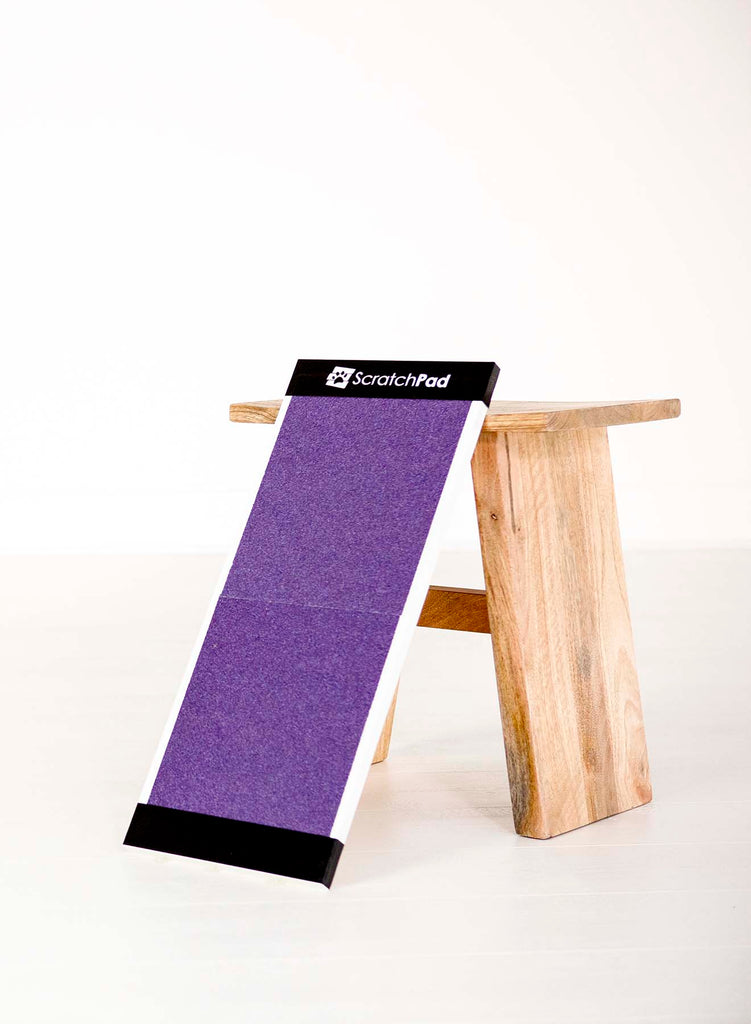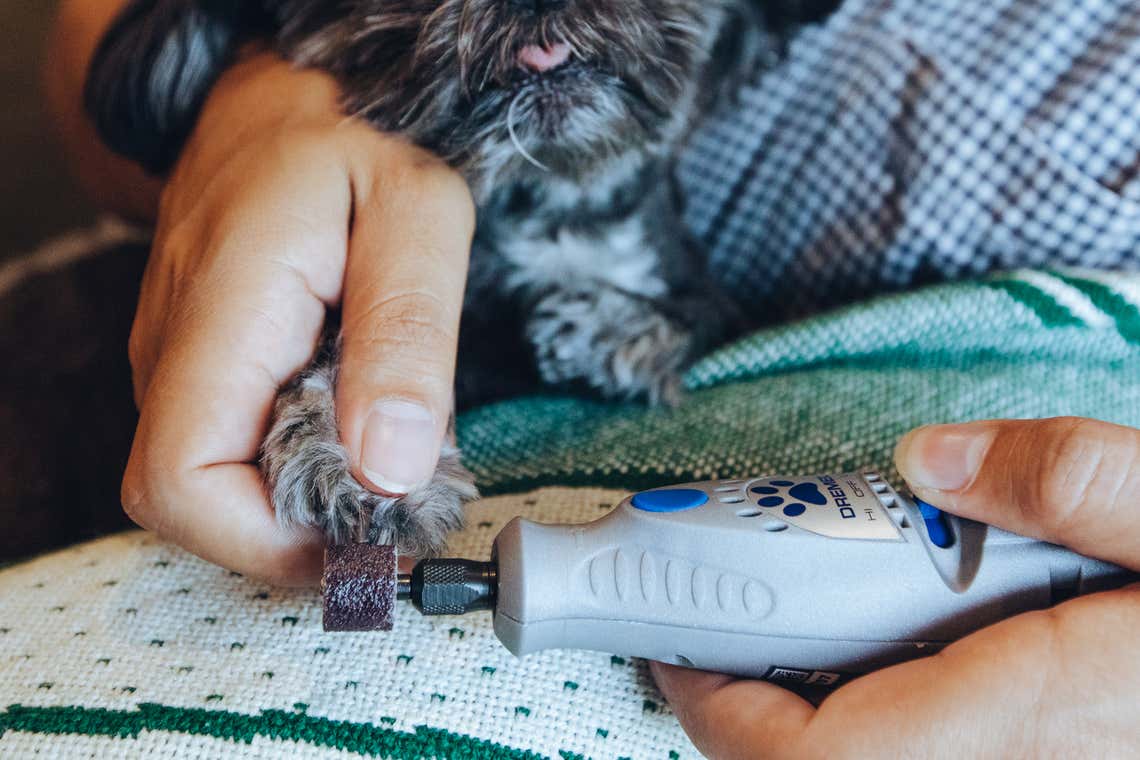Cooperative Care
What is it? |
|
Cooperative care is training that allows our pets to be active, willing participants in their medical care! Handling, nail trims, and vet trips can all be less stressful on both dogs and the veterinary staff.
We teach our dogs what to expect, how to participate and how to ask for a break. In return, they get to show off their awesome new tricks, form friendships with vet staff and make medical care much less overwhelming. |
Why do it?Going to the vet should no longer require lots of restraint, fear, anxiety, stress or bites. It can become a fun outing to practice training and have their treatments done smoothly. Giving your dog a clear way to communicate how they're feeling will allow you to advocate for them and build their trust in you. Your dog and the veterinary staff will love you for it!
|
Can my dog really learn that?Absolutely!! Most zoo animals are trained to participate in their medical care- everything from dentals to ultrasounds to blood draws. Almost no animal is untrainable, regardless of type, breed, size, age or anything else. Go ahead, try it out!
|

